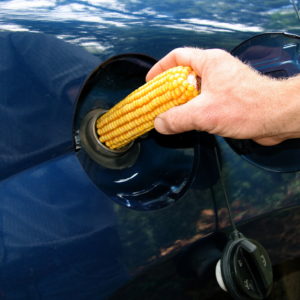Recently, the Renewable Fuels Association circulated a study by Philip Verleger that examines the effect of the Renewable Fuel Standard — the federal program mandating the blending of ethanol into the U.S. gasoline pool — on crude oil and gas prices. The study concludes that the RFS lowered average national gasoline prices by 22 cents a gallon and crude oil prices by $6 a barrel between 2015 and 2018. However, this conclusion is rather misleading as there are clear issues with this report that skew the findings.
Through the use of several statistical models, Verleger determines that the price reduction was the result of the “… blending of approximately one million barrels per day of ethanol into U.S. motor fuels.” Note that these specific conclusions are not from the incremental output in ethanol across the four-year period but the entire domestic supply available to the U.S. transportation fuels system.
Verleger also quotes a paper by Wallace Tyner, Farzad Taheripour and Harry Baumes titled “Analysis of Impacts of Possible Increase in Conventional Biofuel RFS Level,” claiming that their research supports his results. And yet, in communications with EPRINC, the authors pointed out that their paper has not been circulated nor have they authorized any quotations from the paper. Additionally, their research is still seeking to quantify the amount of ethanol consumption that can be tied to traditional market forces and the volumes due to government policy.
Furthermore, it is important to point out that ethanol production did not expand during the period the Verleger study concluded it reduced the price of gasoline. From 2015 to 2018, U.S. ethanol production, including net exports, was essentially unchanged with average annual output at approximately 1 million barrels per day. In contrast, during the same time period, U.S. output of crude oil, the primary feedstock for the production of transportation fuels, increased from 8.5 million barrels per day to 11 million, an annualized rate of 6.3 percent.
So what’s going on here?
EPRINC’s own work has repeatedly pointed out that ethanol is a valuable blending component used in the production of gasoline. It can help reduce local air pollution and also increase octane in gasoline. At volumes below 10 percent of the gasoline pool, ethanol is usually the most cost-effective blending component, and market forces alone would drive it to blending levels anywhere from 8 percent to 10 percent of the gasoline pool.
Therefore, one could conclude that the problem with U.S. fuels policy is not ethanol, but rather the RFS mandate that requires that domestic gasoline include increasing volumes of ethanol regardless of costs or consumer acceptance.
Through the requirement of renewable identification numbers, or RINs, — a credit trading program seeking RFS compliance enforcement — the RFS has actually added between 6 and 9 cents per gallon to gasoline prices during the 2015-2018 period, or a total cost to American consumers between $6.5 billion and $16.2 billion, annually. These results come directly from EPRINC research, Energy Information Administration, Congressional Budget Office, and numerous other independent research organizations. Proponents of the mandate argue that this is not the case, but when gasoline is exported, RIN values cannot be captured in the export market.
So while the claim is that without the RFS program, gasoline prices would be higher, it’s been shown that the mandate is not particularly important when blending less than 10 percent, as the market is already driving that need. We should then stop examining the program’s negligible effect and instead examine where the program goes from here.
As we are now in an era of flat or declining U.S. gasoline consumption, higher ethanol consumption can only come about through higher blend levels. But there are two technical constraints to mandating higher blends. First, most vehicles are not warrantied for blends above 10 percent. Second, approximately one-third to a half of U.S. filling stations aren’t certified for gasoline blends above 10 percent and the cost of retrofitting a filling station is exorbitant.
In a world without a mandate, fuel producers could adjust their production decision to take advantage of a wide range of lower-cost options, including ethers, reformates and other appropriate gasoline blending components. In most instances, ethanol would dominate the market and would be the first choice for a blending component to meet octane and local air pollution requirements. But like all fuels in the marketplace, it would have to remain competitive to ensure consumers get the lowest possible price for gasoline. Ethanol production is no longer an infant industry, and it can effectively compete in the fuels marketplace without a government-imposed mandate.

